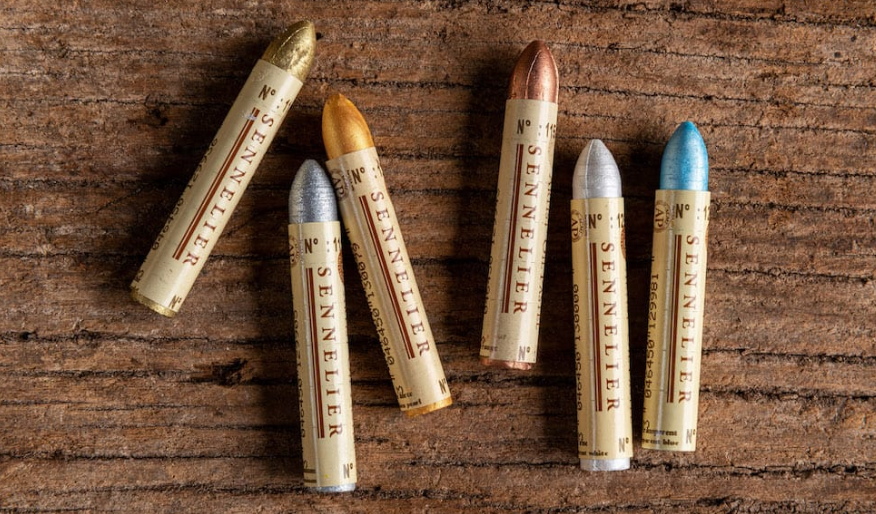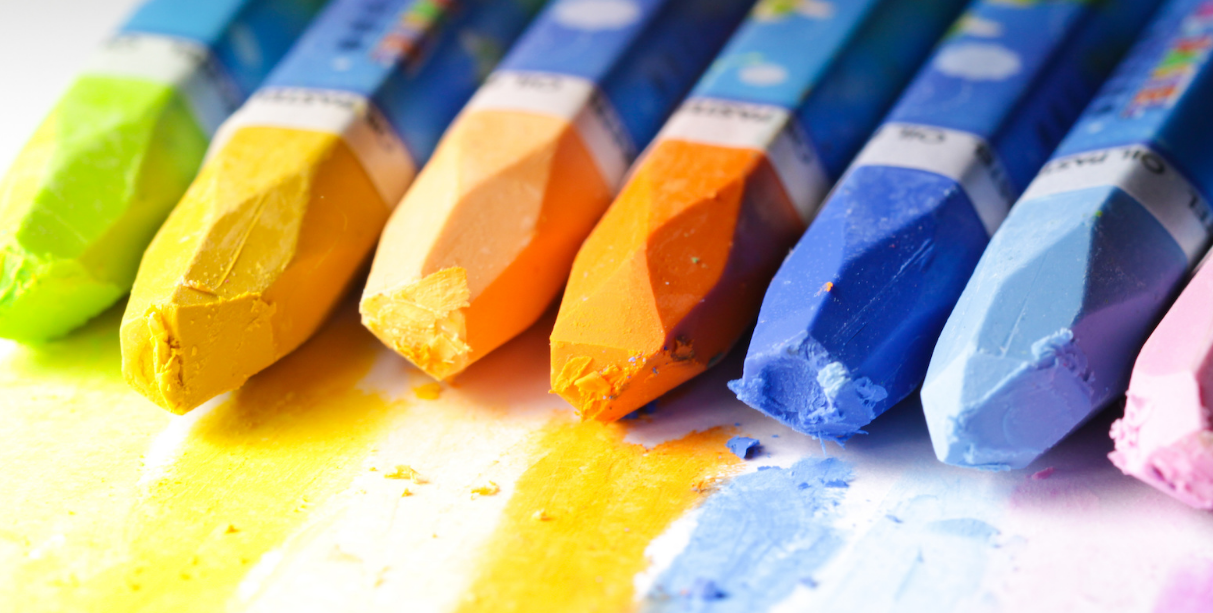Drawing and painting with oil pastels. There is someone out there who trembles at the very thought of painting with oil pastels, thinking that these are pretty similar – if not the same – to wax crayons. The second category that we used to use as children. Do you remember how unsatisfactory those colors were? It was never possible to cover the sheet correctly with those hard sticks, with dying transparency, marked here and there by darker strokes when the hand – inevitably – escaped, giving the greater intensity of color. So let’s immediately put our hands on and say that no, absolutely not, oil pastels are anything but and are undoubtedly worth a try.
From who? Well, potentially anyone! Oil pastels can be a gateway into the art world for those who dream of painting in oil but are not familiar with colors and tints. Or again, it can be the perfect technique for those looking for a result similar to that of oil painting but, at the same time, does not want to have to do with turpentine, mediums, and canvases. And, finally, painting the landscape drawing with oil pastels is ideal for those who, not having an atelier available and therefore not able to count on the space necessary for an easel, want to concentrate on more miniature paintings and a more limited number of accessories for painting.
How are oil pastels made?
Compact and colorful, you want to paint to see them. But what’s in these bright cylinders? Oil pastels are made by mixing color pigments and other pastes with a linseed oil base. However, there is no need to be scared. Unlike oil-based colors, pastels don’t get dirty, and what’s more, they don’t have any unpleasant odors. They are therefore convenient painting accessories and, in themselves, effortless to use. They can purchase individually – Sennelier oil pastels, for example, are available in 120 different shades, all of which can be bought separately – or in sets of 12, 24, 36, or 48 pieces.
Why use oil pastels?

There are several great ideas to start painting with oil pastels. First of all, it must say that these sticks are comfortable to use and do not require too much space – being moreover, by their very nature, to be used on small supports. As anticipated, pastels allow excellent results without dirtying like oil colors, without the need for additional oils, and without significant bulk. They are therefore perfect for those who have little space available or for those who, on the other hand, want to paint “outdoor” without carrying an easel, brushes, palette, and so on. The space required by oil pastels is slightly greater than that needed by very simple colored pencils. But there are not only the advantages. We must not forget that pastels do not allow use on too large surfaces, do not perform well in cold rooms – or too cold hands – and are not suitable for painting minute details.
How to paint with oil pastels?
Before using oil pastels, there are several aspects to consider: based on the different artistic backgrounds, you could run into many other errors. It means that the complete beginner might be committing a kind of naivety. At the same time, the experienced painter, firm in his habits with oil colors, might absentmindedly think of behaving the same way with pastels too. On what to paint with oil pastels: supports and paper Well, first, you need to talk about the best media for oil pastels.
Oil pastels are versatile and can be used on many different surfaces: cardboard, wood, thick paper, panels, or canvas cardboard. Thinking of their oily base, painters could immediately opt for the canvas. Many artists, however, will turn up their noses. For some, the texture of this support does not combine well with the hold of the pastels. Furthermore, the pressure that we have to apply to the pastel and the possibility of working with the fingers to pull the color is impractical on a canvas, as it is not placed on a wooden background but is pulled on a frame. Before, we also talked about paper, but not even regular drawing paper goes perfectly: much better to use glossy cardstock or, possibly, very thick form with fine/coarse grain such as watercolor paper. Alternatively, perfectly planed and smoothed wooden boards are also good to be perfectly smooth.
How to choose good oil pastels?
In the choice of oil pastels that we are going to use, the same rules apply as we have discussed for other techniques. Choosing the most suitable colors for our painting style is a very personal thing. The variety of shades present in the color card is significant. While it is true that by mixing colors, we can get any shade that comes to mind, sometimes it is convenient to have precisely that shade in its purest form. Another fundamental aspect is the hardness of the paste that makes up the pastel. As we will explain shortly, the warmth of the environment in which we work and our hands will affect the texture of the pastel and the possibility of mixing it with other colors with overlays. But that is not all.
By trying different brands and various types of pastels, we will understand how everyone reacts differently, has a more excellent grip even overlapping, is soft and easy to spread, or remains harder and therefore is more suitable for tracing drawings and lines early stages of the painting. In short, to find the oil pastel that’s right for you, you will have to try several and understand what the peculiarities of each one are!
The oil pastel technique
Having clarified which is the best support, we are ready to start painting with oil pastels! We assume that these do not mix before being applied, as happens in the way of painting. The oil pastels are mixed by overlapping, directly on the support, blending the colors with your fingers. To give a particular shade of red, therefore, a type of red crayon will be spread, on top of which a little yellow or orange will be added: at this point, you will work with your fingers, ‘pulling’ the colors and mixing them. It is therefore clear that, with oil pastels, the possible ranges are infinite, as well as the combinations that can be obtained starting from one’s chromatic sensitivity.
Our hands, to work well, must always be clean: before pulling a light color, therefore, we should be sure that we have cleaned the fingers from the previous dark color not to risk making a disaster. It is also required to operate in a warm climate, and our hands must also be friendly. Since we will have to “pull” and mix the color with our fingers, the heat of our fingertips will serve to soften the layer of paint and facilitate the procedure.
Also Read: draw the hatch


